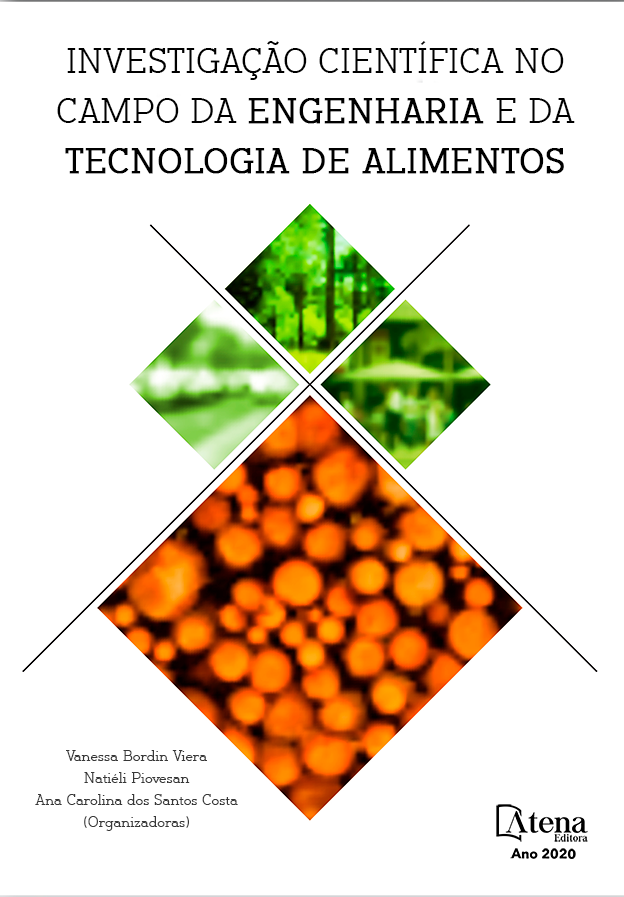
MODELAGEM MATEMÁTICA DO PROCESSO DE SECAGEM DE MANDIOCA
A secagem é uma operação de aplicação de calor sob condições controladas para remover a maior parte de água livre presente no material por evaporação. Um modelo matemático que descreve a cinética de secagem é normalmente expresso geralmente em função da massa total do material úmido e do tempo de duração do processo. A mandioca apresenta características nutricionais importantes como potássio, fósforo, ferro, cálcio, vitaminas do complexo B, que justifica o seu emprego tecnológico para a obtenção de novos produtos. A farinha de mandioca é muito utilizada devido ao baixo custo, rica em fibras dietéticas e isenta de glúten. O presente trabalho teve por objetivo ajustar os dados experimentais obtidos na secagem da mandioca com modelos clássicos descritos em literatura como modelo de Page (1949), Midilli et al., (2002) e Wang e Sing (1978), e desta forma predizer informações não testadas experimentalmente. Aproximadamente 30 kg de mandioca foram descascadas, higienizadas e colocadas em solução de hipoclorito de sódio a 2% por 15 minutos para a eliminação de contaminantes, a seguir foram cortadas em tamanhos de 2 cm, sendo submetidas à cocção a 75 °C/20 minutos. Após a cocção foram acondicionadas em geladeiras para resfriarem, sendo em seguida fatiadas com auxílio de um ralador e congeladas a -18 °C. A secagem foi realizada utilizado forno elétrico com circulação forçada de ar, sendo realizada em temperatura de 50, 55 e 60 °C, com acompanhamento da perda de peso em balança eletrônica. Os dados foram ajustados com o software OriginPro 2017. O método dos quadrados mínimos foi utilizado para obter o modelo que melhor descreve o conjunto de dados experimentais da secagem, através do coeficiente de correlação. Conclui-se que o modelo de Midilli et al., (2002) é o que melhor representa dos dados experimentais, podendo ser utilizado para predição da cinética de secagem.
MODELAGEM MATEMÁTICA DO PROCESSO DE SECAGEM DE MANDIOCA
-
DOI: 10.22533/at.ed.17720250912
-
Palavras-chave: Cinética da secagem; Mandioca; Modelagem matemática
-
Keywords: Drying kinetics; Cassava; Mathematical modeling
-
Abstract:
Drying is a heat application operation under controlled conditions to remove most of the free water present in the material by evaporation. A mathematical model that describes the drying kinetics is usually expressed as a function of the total mass of the wet material and the duration of the process. Cassava has important nutritional characteristics such as potassium, phosphorus, iron, calcium, B vitamins, which justifies its technological use for obtaining new products. Cassava flour is widely used due to its low cost and unique flavor, being rich in dietary fibers and gluten free. The present study aimed to adjust the experimental data obtained in drying cassava with classic models described in the literature as a model by Page (1949), Midilli et al., (2002) and Wang and Sing (1978), and in this way to predict information not tested experimentally. Approximately 30 kg of cassava were peeled, sanitized and placed in a 2% sodium hypochlorite solution for 15 minutes for the elimination of contaminants, then cut into 2 cm sizes, and subjected to cooking at 75 °C / 20 minutes. After cooking, they were stored in refrigerators to cool, then sliced with the aid of a grater and frozen at -18 °C. The drying was carried out using an electric oven with forced air circulation, being carried out at a temperature of 50, 55 and 60 °C, with weight loss monitoring on an electronic scale. The data were adjusted using the OriginPro 2017 software. The least squares method was used to obtain the model that best describes the experimental drying data set, through the correlation coefficient. It is concluded that the model of Midilli et al., (2002) is the one that best represents the experimental data, and can be used to predict drying kinetics
-
Número de páginas: 8
- Gabrieli Beatriz Ferronatto
- Fernando Jünges
- Cristiane de Carli
- Lucas Vinícius Cavichi
- Valdemar Padilha Feltrin
- Elciane Regina Zanatta
- CELEIDE PEREIRA


